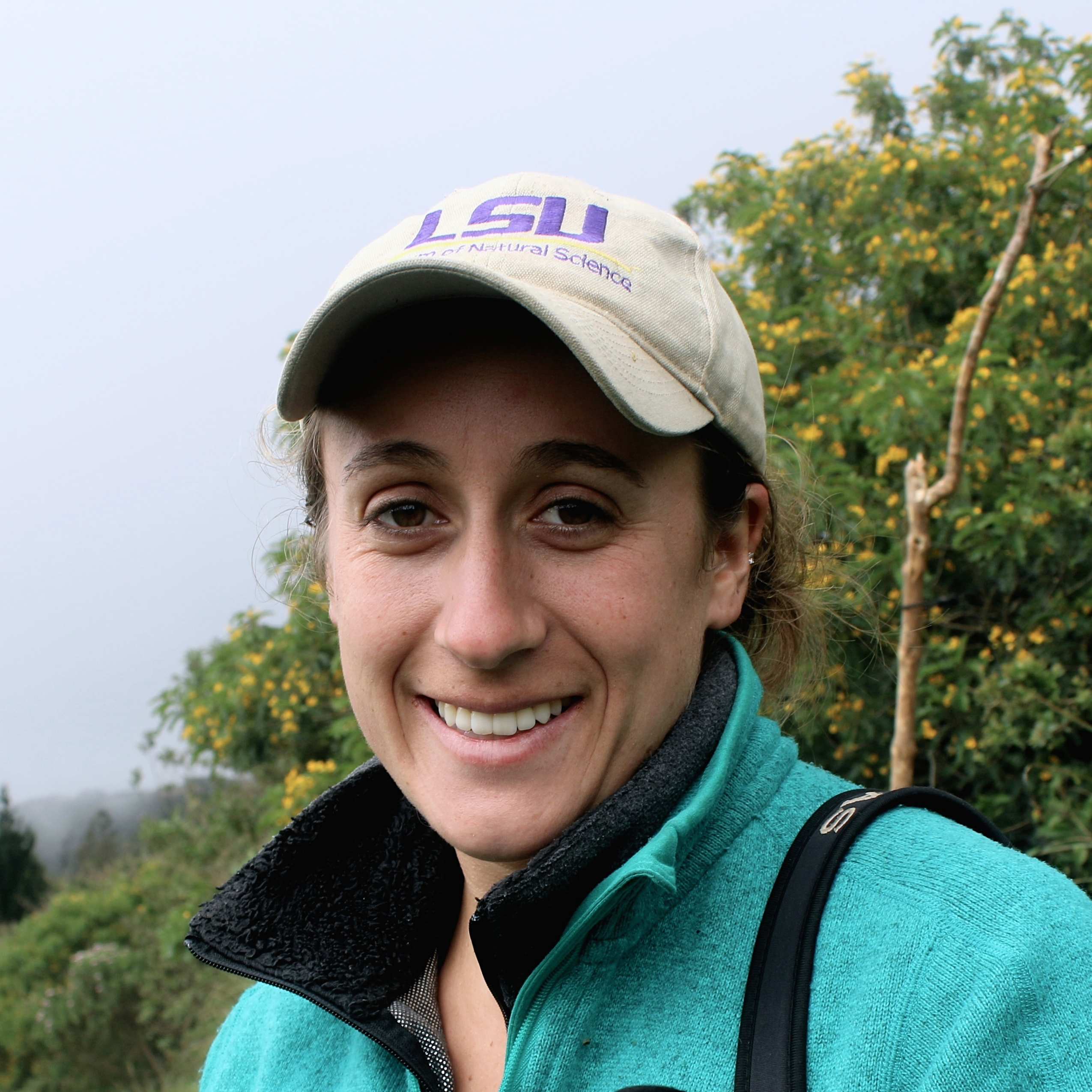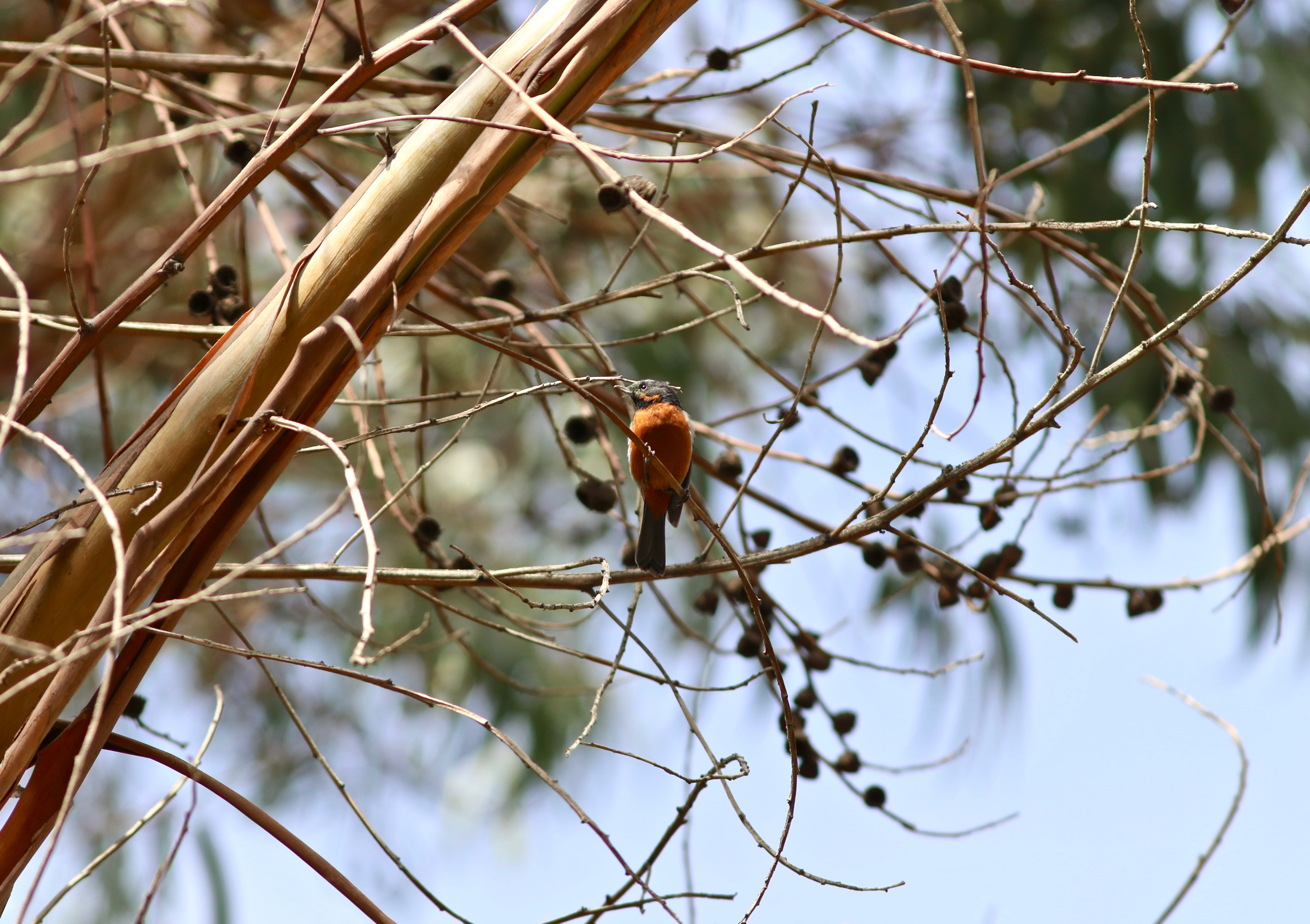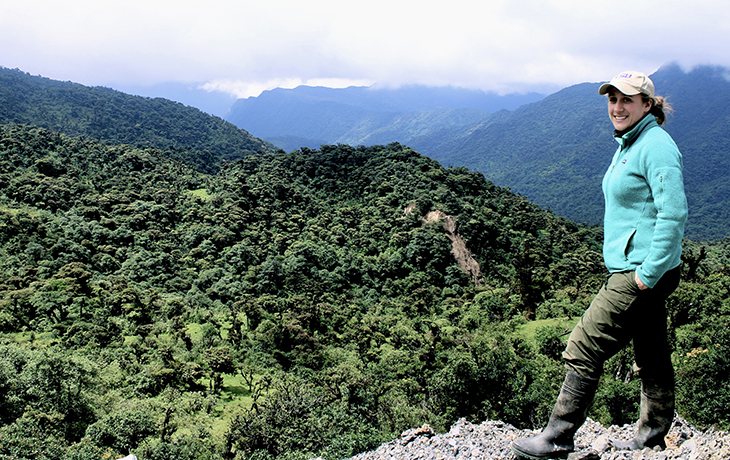Student Spotlight: Anna Hiller, BS '14 Environmental Sciences
In our first Student Spotlight featuring a CNR alumna, Anna Hiller shares her experiences conducting research, publishing her undergraduate thesis, and how her studies at Berkeley helped prepare her for graduate school.

Anna Hiller.
How did you get involved in research while you were a CNR student?
As an Environmental Sciences major, I took a series of classes focused on research skills that culminated in a senior thesis. At first, I had trouble settling on a project, but with guidance from instructor Patina Mendez, I ultimately decided to investigate the distributions of Hawaiian arthropods using Species Distribution Modelling (SDM). I ended up working with professor Rosemary Gillespie and postdoc Kari Goodman as my advisors.
I came into the project with experience working in a natural history museum at UC Berkeley, the Museum of Vertebrate Zoology (MVZ). My time at the MVZ provided me with a solid foundation working with specimen records and I learned skills like geo-referencing—which assigns GPS coordinates to a specimen using topographic maps). These records are used as the input data for building distribution models. Ultimately, I conducted SDM on a radiation of Hawaiian sword-tailed crickets (genus Laupala) to test for signatures of niche conservatism using data I helped assemble from approximately 5000 specimens in four entomological museums. My senior thesis was titled “Mapping the Diversification of Hawaiian Swordtail Crickets using Ecological Niche Modeling.”
Which CNR programs supported your research?
I received a CNR Travel Grant to fund a trip to Hawaii to present a poster on the results of my senior thesis at the 2014 Island Biology meeting in Honolulu. This was the first academic conference I had ever attended and it was a fantastic experience to meet many of the people whose papers I had read and who had worked on the same study system that I was focusing on.
I was also fortunate to have received a student-initiated Sponsored Projects for Undergraduate Research (SPUR) grant at the same time, which allowed me to expand my research from the taxa (Laupala crickets) I studied for my senior thesis to an additional three Hawaiian arthropod radiations—Drosophila flies, Tetragnatha spiders, and Nesosydne planthoppers. With this extra support, I was able to visit the Bishop Museum to examine and digitize specimen records for these groups. I also got to join Berkeley’s Hawaii Dimensions team and sample additional field locations on the islands of Maui, Oahu, and Hawaii. I will never forget our expedition up the mist-shrouded side of Haleakalā volcano, searching for these endemic arthropods in a native koa-`ōhi`a rainforest with our headlamps lighting the way.

A black-throated flowerpiercer in Peru.
The Biological Journal of the Linnean Society has published your undergraduate research. Can you tell us about your path to publication?
It was a long process! But it has been rewarding to have seen it through. The year after I graduated, I digitized and analyzed the three additional groups I worked on through the SPUR grant. The following summer, I worked hard to draft a manuscript and send it around to my co-authors for comments. Ultimately, this process of revision and edits took over a year but, in the fall of 2016, I finally had a manuscript ready for submission. I uploaded all the documents and figures to the journal’s submission portal, hit submit, and it went “out for review.” This is a period of time during which other scientists read the manuscript and evaluate your methods, analyses, and conclusions to see if they agree with your approach and think it is worthy of publication.
The reviewers had lots of suggestions so we spent another several months addressing their concerns as best as possible, and running extra analyses … only to get rejected! But the good news was, that process made the paper much better and I was able to turn around and re-submit it to another journal a few months later, where it was ultimately accepted! The moral of the story is that publishing a paper takes a lot of time and effort, but if you stick with it, it will pay off.

Anna Hiller hiking in Bolivia.
What have you been up to since graduation?
I am now a graduate student at Louisiana State University working at the LSU Museum of Natural Science. I study patterns of latitudinal variation and biogeography in a group of Neotropical birds called the flowerpiercers (genus Diglossa). Much of the inspiration for this work came from my undergraduate experience working with data derived from natural history collections and from my exposure to macroevolution in Dr. Gillespie’s lab. High elevation communities in mountain ranges like the Andes—where flowerpiercers are found—in many ways parallel island systems; taxa often show a stepping-stone pattern of biogeographic history and repeated evolution of color patterns, as has been documented in island groups like Hawaiian Tetragnatha as well.
Additionally, my experience applying for grants, conducting independent research, presenting at conferences, and writing a manuscript helped immensely when applying to graduate school. When I contacted potential advisors, I could discuss my previous research experience and better formulate ideas for future PhD projects. My research experience also made me a strong candidate for competitive fellowships, such as the Graduate Research Fellowship through the National Science Foundation, which I received last year. Overall, the support I received from CNR and the training in research methods that was a part of my undergraduate experience at UC Berkeley helped me gain exposure to every step of the scientific process. The skills I learned at CNR have been invaluable to my PhD work and will continue to serve me for many years to come, as I pursue a career in research based on natural history museum specimens!
Do you know of a student or group in Rausser College involved in noteworthy research, community outreach, or extracurricular activities? Let us know by submitting a suggestion with this nomination form.
